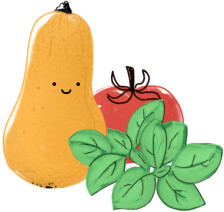Grasnelke Standardsorte

Variety
Grasnelke Standardsorte
created by Alex&Sempi at 21.05.2025
Features
Location
planting: outdoor
planting: house wall / wall
Soil: permeable soil
soil moisture: no waterlogging
biotope: mountain area
Fertilization: nutrient-poor
fertilization: minimal
light: Full sun
Soil: light
Soil: gravelly to sandy
fertilization: low-humus
Wind: windverträglich
fertilization: low-nitrogen
Soil: rocky, stony
Soil: loosened
Water: sparingly
Planting: rock garden / alpine garden
pH value: alkaline soil (7,5-8,5)
Water: Let the substrate dry in between
Soil moisture: dry
biotope: beach / coastline
fertilization: high-lime
Boden: kalkhaltig
Season Overview
Propagating
Planting
Harvest
J
F
M
A
M
J
J
A
S
O
N
D
1ST YEAR
FOLLOWING YEARS
Description
The genus Armeria belongs to the family Plumbaginaceae within the order Caryophyllales. Around 50 species are grouped together in the genus Armeria. Carnations beautify many gardens with their bright white, pink or yellow flowers. The contrast between the delicate leaves and the ball-shaped flowers makes every gardener's heart beat faster. Carnations are robust, require little prior knowledge, brighten up any rock garden with their delicate appearance and adorn any vase as a cut flower. Representatives of the Armeria genus are undemanding perennials that enchant with lush blooms throughout the summer. Numerous insects enjoy the wide range of food on offer. The best-known species in this genus are the common carnation (Armeria maritima) and the alpine carnation (Armeria alpina). Leaf The foliage leaves of the grass carnations have no stems and are arranged in basal rosettes. The lamina (leaf blade) is simple and linear to linear-spatulate. Leaves are called linear if they are more than ten times as long as they are wide and have almost parallel edges. Leaves without a stalk, as in the case of carnations, are described as strap-shaped. Depending on the species, the leaves are narrower at their base, rarely straight, and have a smooth leaf edge. Flower Carnations have small five-petaled flowers in dense, spherical flower heads, which stand individually at the end of a long stem. The inflorescence stem (peduncle) is softly hairy or glabrous, rarely covered with wrinkles. At the upper end, tubular leaf sheaths surround the inflorescence stem. The inflorescences are terminal, hemispherical and capitate and consist of cymose partial inflorescences that stand together like coils and contain many individual flowers. Bracts with a parchment-like, dry skin surround each individual inflorescence. Carnations have a maximum of five individual flower stalks. Their flowers are hermaphrodite and have a double perianth. Plants of the genus Armeria have five sepals that grow together in a funnel shape and surround the growing and ripe fruit. The calyx tube of the grass carnations has ten ribs and downy hairs; more rarely they are glabrous. The tip of the calyx is membranous and with or without an awn. Carnations have five petals, which are fused at the base and vary in color from white to purple. The five free stamens are arranged in a circle and do not exceed the size of the plant's corolla. The stamens of the Armeria grow together with the petals at the base. Carnations have five free pistils, which have small hairs at the upper end and end in a smooth or papillose stigma. Depending on the species, there are two different types of flower in terms of pollen and stigma characteristics. Fruit The fruits of the grass carnations are dry, open transversely and contain a single seed. Growth Carnations are perennial, herbaceous and grass-like plants. They grow bushy in cushion-like shrubs and form taproots. Carnations reach a height of between ten and fifty centimetres and grow up to 30 centimetres wide. Armeria grow quickly and form beautiful carpets of flowers in a short space of time.
Non hybrid
Frostproof
Growing tips
Location
Details
Light requirement
Sunny
Water requirement
Dry
Soil
Light (sandy)
Nutrient requirement
Low
Light germinator
Germination temperature
15 - 20 °C (Degrees Celsius)
Plant distance
20 cm
Row spacing
25 cm
Seeding depth
0.5 cm
Companion Plants
Antagonistic Plants
Diseases
Angular leaf spot of cucumber
Root Rot
Pests
Spider mites
Land snails
Aphids